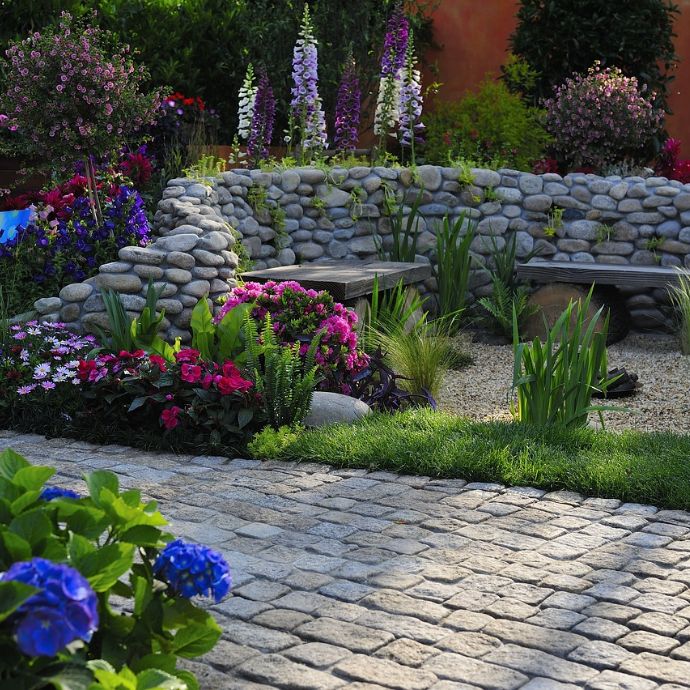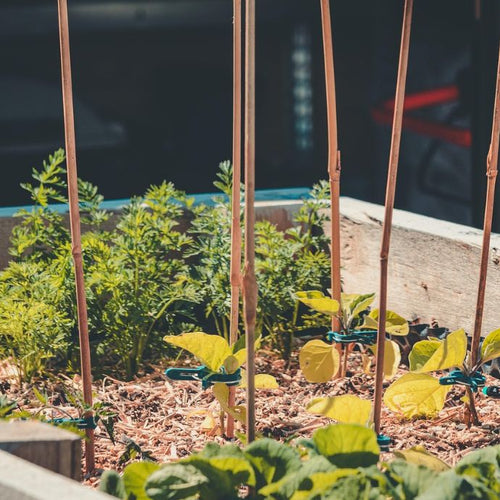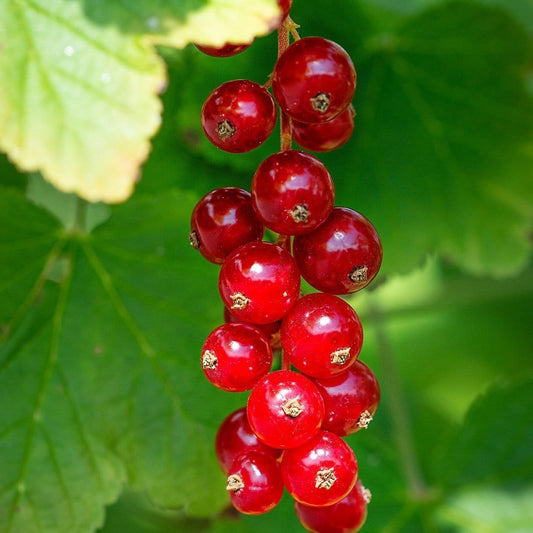Rental Garden Ideas
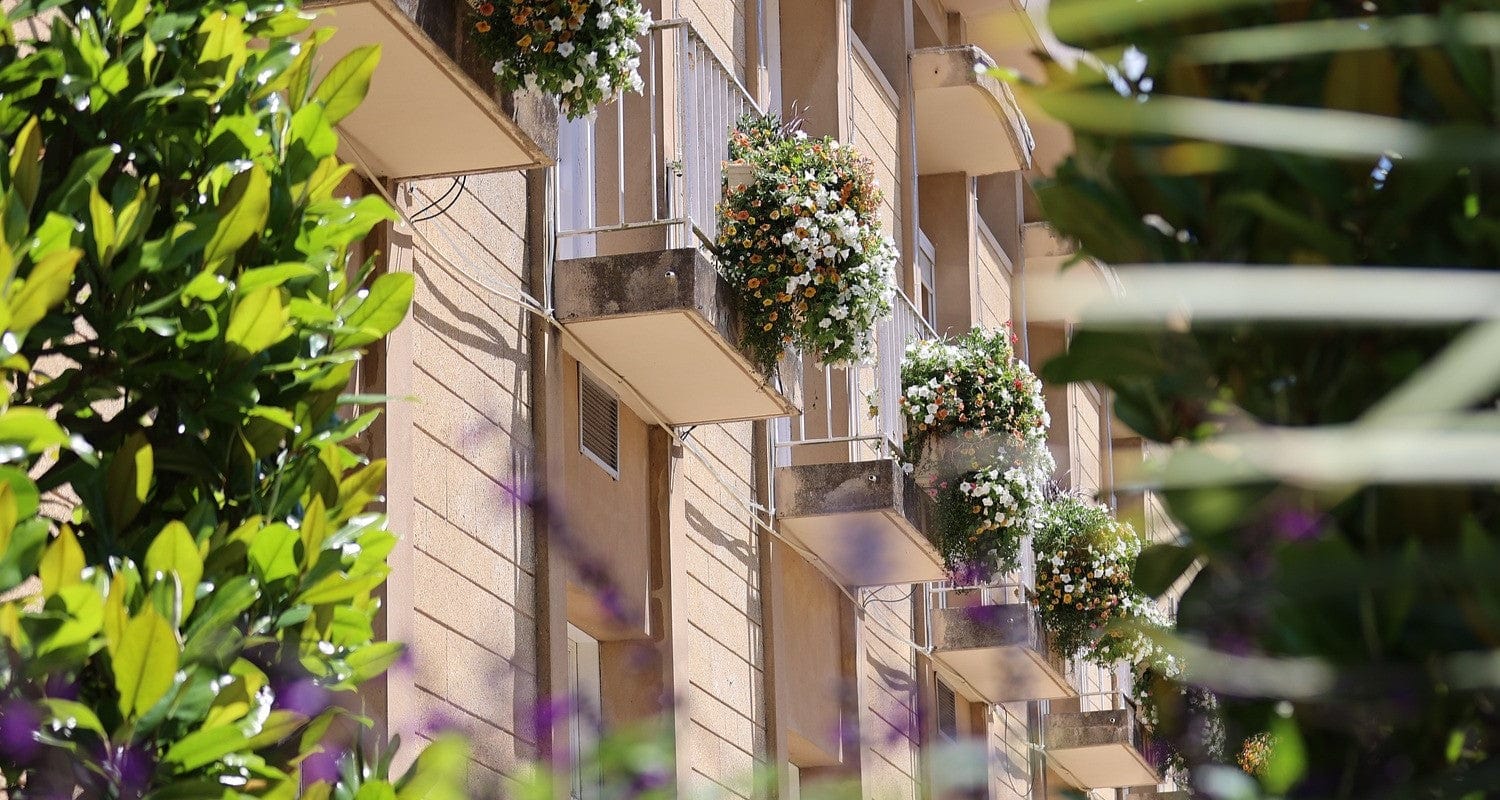
Landlords, like all other men, love to reap where they never sowed.
Adam Smith
Home is where the garden is, right? It’s the place where you relax, entertain, get fresh air and exercise, and grow your own food. Not to mention it benefits the whole neighbourhood by encouraging wildlife to live in the area.
But what if, like almost forty percent of us in the UK today, your home is rented? That presents some challenges to the keen gardener. Mainly that if you plant anything in the ground, you may not be able to take it with you and that can be a bit of a gut-punch when you’ve nurtured it and watched it grow, not to mention the money you spent on it. However, with a bit of creativity and this handy rental garden guide, there are lots of ways to get your dream garden, even if it’s not attached to your dream house…
Jump to:
- Negotiating with your landlord
- Best plants for renters
- Container gardening
- Walls, fences and balconies
- Yards and shady spots
- Growing your own food
- Ponds
- Composting
- Privacy
- Windowsills
- After you move
Deeeeeear kindly Mr Landlord…
Before you make plans, it’s worth talking to the landlord/lady/agency to check what you’re allowed to do with the garden - or not. Some enlightened souls will be glad you want to look after the place and let you garden to your heart’s content. Others… not so much. Here are some persuasive points to try:
- Gardening increases a property’s value - a house that looks cared for will attract a higher price when it comes to them selling up.
- If you keep the garden tidy, they won’t have to pay some guy to do it.
- Gardening can hide less-than-lovely outbuildings and views.
- Gardening can solve ground issues e.g. waterlogging - by helping to stabilise the soil.
- If all this fails, you could offer them free courgettes.
Not allowed to alter the garden, but you’ve already signed that contract? Don’t get mad, get gardening. These small acts of green resistance will satisfy the most epic of gardening urges while sticking it to The Man/Woman/Agency.
How to choose your plants
Choose wisely and your plants will grow quickly so you get the benefit of them, and you’ll be able to take them with you when you go. Here are some more plant characteristics to look out for when you’re planning your rented garden:
1. Buy plants that don’t mind being moved
Some plants don’t like to be moved once they’re planted, including roses, magnolia and cistus, asparagus, rhubarb and artichokes as well as most trees. The RHS advises against moving any plants that have been growing for five years or more, but they do have some really useful advice for moving those you can, in the best way possible.
2. Avoid self-clinging climbers
A self clinging climber will attach itself very firmly to any permanent structure in its way, whether that’s your fence or your landlord’s shed - and suckering climbers like ivy are difficult to remove from walls. These characteristics make them hard to take with you when you leave. The best kind of climbers for rented gardens are more compact varieties which need to be tied in to their supports (so you can untie them eventually) and deciduous varieties which can be moved more easily while they’re dormant in the winter.
3. Consider annuals
Annual flowers really brighten up a garden, are ideal for pots and hanging baskets and last for just one season - the downside is that they’re expensive and take a lot of watering and feeding. For a similar outlay you could grow some annual vegetables like climbing beans or courgettes, which also have colourful flowers, but give you food too, along with other useful annuals such as wildflowers to attract pollinators or companion plants which act as natural pest control for your food plants.
4. Dwarf varieties for the win
Stick to dwarf varieties of trees, compact climbers and shrubs and you’ll be able to grow them successfully in movable containers. Even if you plant them in the ground, it will be easier to relocate them as they’re smaller (and you won’t have to dig, dig, dig the whole day through). Just check the eventual height and spread measurements on your chosen plant’s page.
5. Deciduous plants are easier to move
Deciduous plants go dormant from late autumn to early spring, meaning that they stop actively growing. If you need to move a plant that’s in the ground, this is the best time to do it as you can transport it without a pot. Make sure you don’t damage any of the roots when digging up your plant, and do this as late as possible so you can plant it in its new home as soon as possible.
6. Handy herbs
Herbs are the perfect choice for a rented garden. Group several pots of herbs together on a patio or in a yard and they’ll do three jobs at once by looking great, smelling even greater and giving you food. You’ll have to replant annual herbs like basil and coriander each year, but perennials (or hardy herbs) like rosemary, mint and thyme will keep going in their pots year after year.
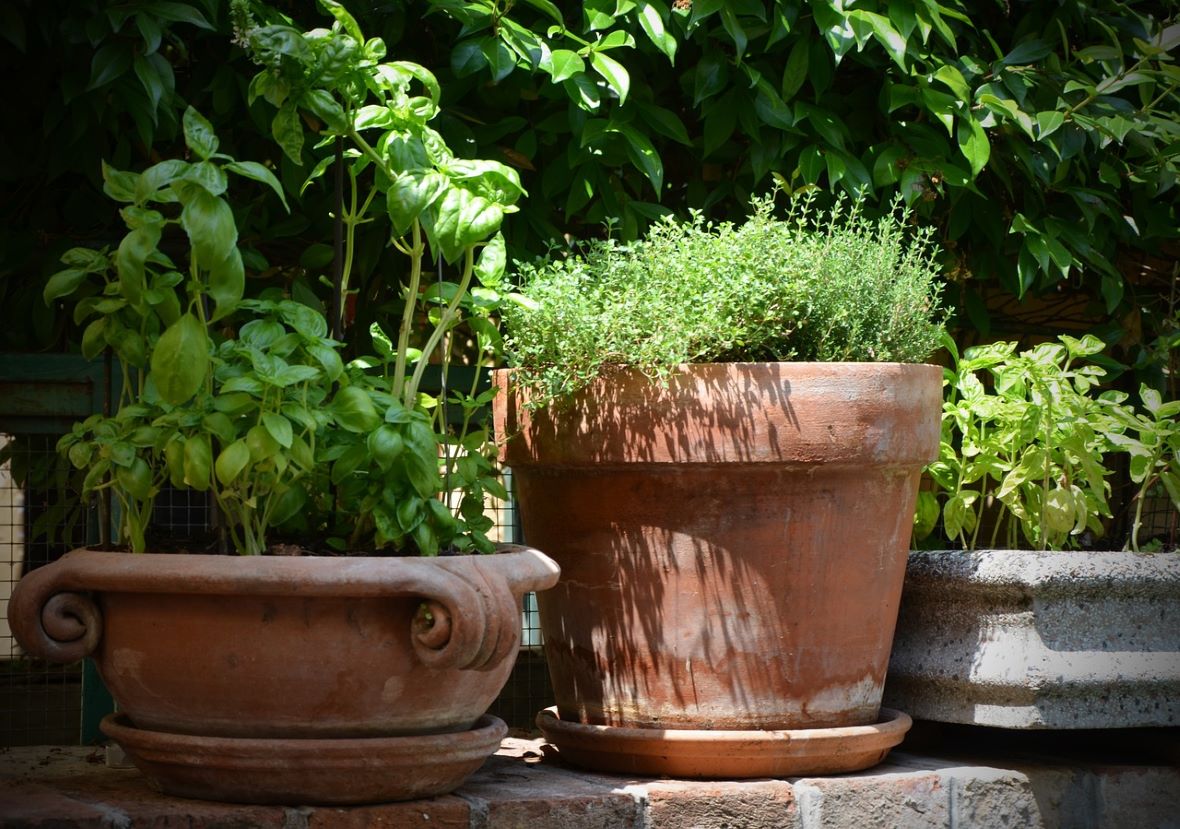
7. Flowers for cutting
Growing a cutting garden is a great way to brighten up not only your rented garden but your magnolia-painted, picture-hooks-forbidden interiors too. My top pick is dahlias, as not only are they off-the-scale gorgeous, but the more flowers you cut, the more the plant produces. What’s more, you can dig up the tuber after it’s finished flowering and relocate it easily.
Container gardening
Gardening in containers is the obvious solution to your rental garden dilemmas, but forget any ideas you might have about sorry looking ceramic donkeys full of begonias. We’re talking much, much more than that! There are lots of surprising things you can grow in pots, and with the rise in renting, growers are increasingly breeding dwarf trees and compact plants that don’t need a lot of space or support. Pick the biggest pots you can carry and fill them full of dwarf trees, fruit bushes, patio roses, climbers - the sky’s the limit.
Our resident allotmenteer Zoe recommends arranging your potted plants in the same way you would a border, by layering them in order of height with taller pots and plants at the back of your sightlines and smaller ones at the front. You can use plant stands or even just bricks/paving slabs to achieve this effect.
My top tip would be to stand your largest pots on those wooden plant trolleys with wheels on, so that they’re easier to move when they’re full of soil and a massive blueberry bush.
If you’re on a tight budget (and who isn’t?) you can upcycle pretty much anything into a plant pot. Buckets, sinks, old drawers, bins, welly boots, toilets - go skip diving (with the owner’s permission, I’m obliged to say) and see what you can find.
Pots are a wonderful way to rejuvenate a badly maintained or ‘low maintenance’ garden, AKA wildlife free zone. Just cover up that cracked concrete or faded astroturf with as many pots as you can stack on it, and if there’s any space left, outdoor rugs are good at hiding horrible surfaces.

Walls, fences and balconies
Come the revolution, they’ll be the first against the wall. Climbing plants obviously, what did you think I meant? Vertical gardening is a huge win for small or awkwardly shaped spaces.
Many climbers can be grown in pots, including clematis (check that the one you choose is suitable for a pot), jasmine, honeysuckle, passifora and patio roses. Add a freestanding trellis or obelisk to the pot, or attach a trellis to your fence and take it down when you move.
Plant pots with hooks or over-the-rail planters are available in many places, and are a great way of quickly brightening up your fence or balcony. They don’t have to cost a lot - you can make your own from tin cans or large yogurt/ice cream pots by punching holes in the bottom for drainage and attaching them to your fence with strong garden wire. You can also create a living wall comparatively cheaply by using a wall mounted plant hanger with pockets.

Yards and shady spots
A shady or overlooked outdoor area like a yard can be tricky to grow in. Choose plants that don’t need a lot of sun, such as brunnera, foxglove, dicentra and hardy geranium, and make sure to use the lovely blank canvas of the walls to grow a shade tolerant climber like ivy, jasmine or honeysuckle. Have a look at woodland perennials too - they’re used to shadier conditions so they’ll thrive in pots or raised beds in your yard. Foliage plants like hostas, ferns and grasses will soften the angular edges of walls to bring a relaxing forest vibe to your space, while evergreen heucheras can be used in pots, hanging baskets or borders for a splash of colour all year round.

Join the grow your own revolution
Renting isn’t cheap, but growing your own fruit and vegetables is a great way to save money. This is one of the plant types you can feel good about growing in open ground, as most of them will be harvested and dug out within a few months. Make sure you plant vegetables that will crop before you move - as a general guide, spring planting varieties will be ready by September and usually well before, while autumn planting vegetables will mature for picking the following spring. If you can’t wait that long, go for quick growing crops like spinach, kale and other leafy greens, salads, peas and beans - or grow in pots.
Veg for pots
There are lots of vegetables that can be successfully grown in pots - tomatoes, kale, lettuce, green beans, peas, peppers and chillies, spring onions and herbs - and of course potatoes can be grown in sacks or large containers too.
Make sure you choose compact, mini or dwarf varieties of vegetables: bush or ‘tumbling’ tomatoes rather than cordons, dwarf beans rather than anything with a name close to ‘enormous’ or ‘colossal’; babyleaf lettuce and chantonnay carrots. Avoid anything that needs a very large space to grow, such as pumpkins or sweetcorn, or perennials such as asparagus, chard and rhubarb which don’t like to be moved.
Choose large, deep containers at least 30cm deep and wide and site them in a sunny position like a patio or a balcony. Stacking pots are also a great option to save space, and plants like cherry tomatoes and small chillies can be grown in hanging baskets.
Plant some flowers in pots nearby to attract bees, who will pollinate your crops. Bear in mind also that plants in pots need watering and feeding more often than those in the ground. On the upside, they’re easier to protect from pests and cold weather, and you don’t have to worry about soil quality if you’re using compost.

The disappearing veg bed
If you stick to growing annual vegetables, there’s no reason why your gardening should leave a trace. In my old rental there was a border that had been filled in with gravel which had ‘raised bed’ written all over it. I removed the gravel into rubble sacks, replaced it with compost and blocked it in with bricks, then grew tomatoes and beans. When I moved out, I took the compost with me and put back the gravel. Nothing to see here…
Allotments and community gardens
If you can’t grow vegetables in your garden, why not grow them somewhere else?
The traditional way to get an allotment is to rent one from your local council, but they tend to have a long waiting list. Keep an eye out for allotments on private land too - I’ve seen allotments offered on spare land in schools and on farms recently.
Community gardening has really taken off in recent years, with local groups taking over waste land plots of all sizes and volunteers usually more than welcome. The arrangement is usually that volunteers work in the garden or orchard on set days, then harvest and eat a share of the produce. If there isn’t a community garden near you, why not start your own? It’s a great way to meet people in your new neighbourhood.

Water is extra
You don’t need a stately home to enjoy water in your garden - a patio pond can still provide the calming look and sound of moving water, especially if you add a solar fountain. Build your pond in a pot and use plants that won’t grow too large, like dwarf waterlilies, smaller rushes and naturally compact oxygenating grasses. Wildlife including butterflies, birds and dragonflies will love it, bringing more life to your garden and helping to pollinate your food plants.

Can I compost?
Temporary doesn’t have to mean throwaway, or environmentally suspect. You certainly don’t have to swerve composting or collecting rainwater, as there are freestanding water butts and compost bins that you can buy cheaply from your council - or look on your local free stuff group. You can even make your own water butt by connecting a rainwater diverter to a pipe (ask first) and channelling it into an old oil drum or dustbin. You can always shovel all that lovely compost into sacks and take it with you when you go, or give it away to benefit other gardeners.
Creating privacy
One of the problems you sometimes get in a rented place, especially a flat, is the lack of privacy. Living in close proximity to neighbours can be noisy too, but plants can help you mitigate this. Tall ornamental grasses can help to soften noise with their gentle rustling and swaying, while planting bamboo in containers will give you a quick growing living screen for a balcony or street-facing courtyard. Trees in pots are another excellent option.
Windowsill gardening
No outdoor space at all? Don’t despair. If you have a windowsill or two, there’s still a lot you can grow. Many vegetables and flowers do very well in pots indoors, and herb gardens were practically made for windowsills, especially the kitchen one - how much more convenient can it get? When you’ve covered those in planters, why not dive into the gardening nerd wormhole that is hydroponic gardening and grow herbs on your kitchen counter or lettuce on your desk?
As I found in one flat, growing climbing plants (green beans!) can also save on blinds by obscuring your windows while still letting in light. Houseplants don’t have to be restricted to pots on the windowsill - check out James Wong’s flat full of plants for inspiration - they can stand on the floor in large containers, on plant stands or in plant hangers suspended from hooks. Provided you have enough light, you can grow citrus trees and bushy plants like pineapple guava indoors in pots or train kiwi and passionfruit vines around the ceiling.
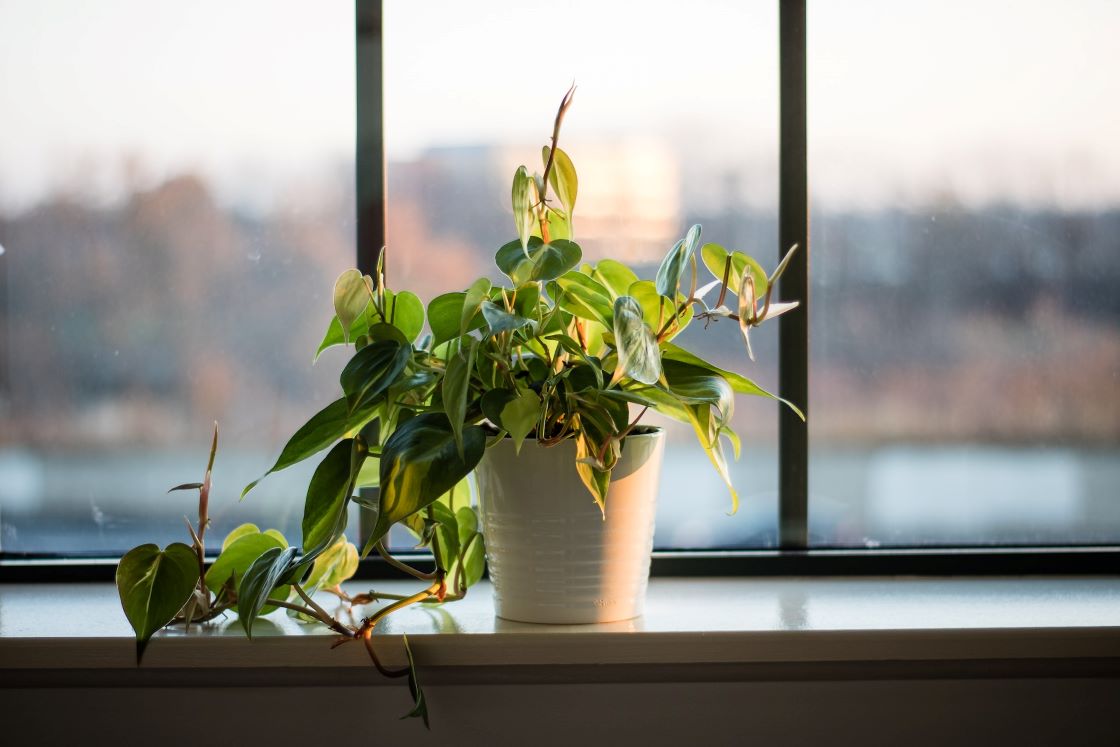
Planting seeds in a garden you never get to see
Hamilton was talking about legacy, but tenancy is close, right? You may feel downhearted at not being able to plant anything too permanent or too large as you won’t be able to take it with you, but if you do have to leave your plants behind, you can soften the blow by taking cuttings from your own or any pre-existing plants, collecting seeds and digging up your bulbs and tubers.
If all else fails, take photos! Even if you can’t take them with you, you can be sure that the time you’ve spent nurturing those plants has made you a better gardener and raised the odds of you succeeding with the same plant in future. It will also:
- Cheer up the next people who rent the place.
- Provide a valuable habitat for wildlife.
- Help the planet by cleaning the air.
Nothing you plant is ever truly left behind.
For more ideas, check out our features on urban gardening, trees for small spaces and growing vegetables in pots.Last updated: 27/11/2023







